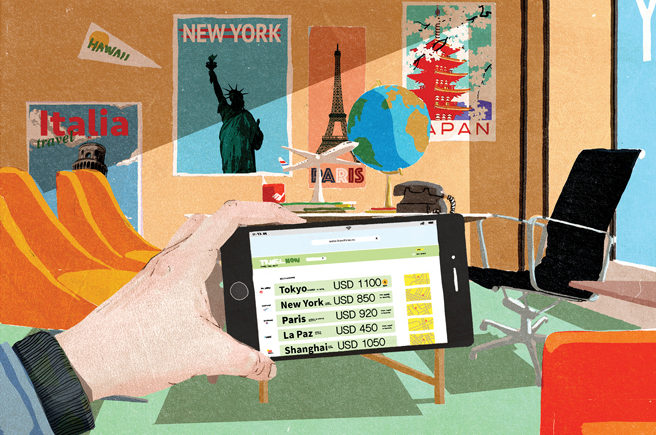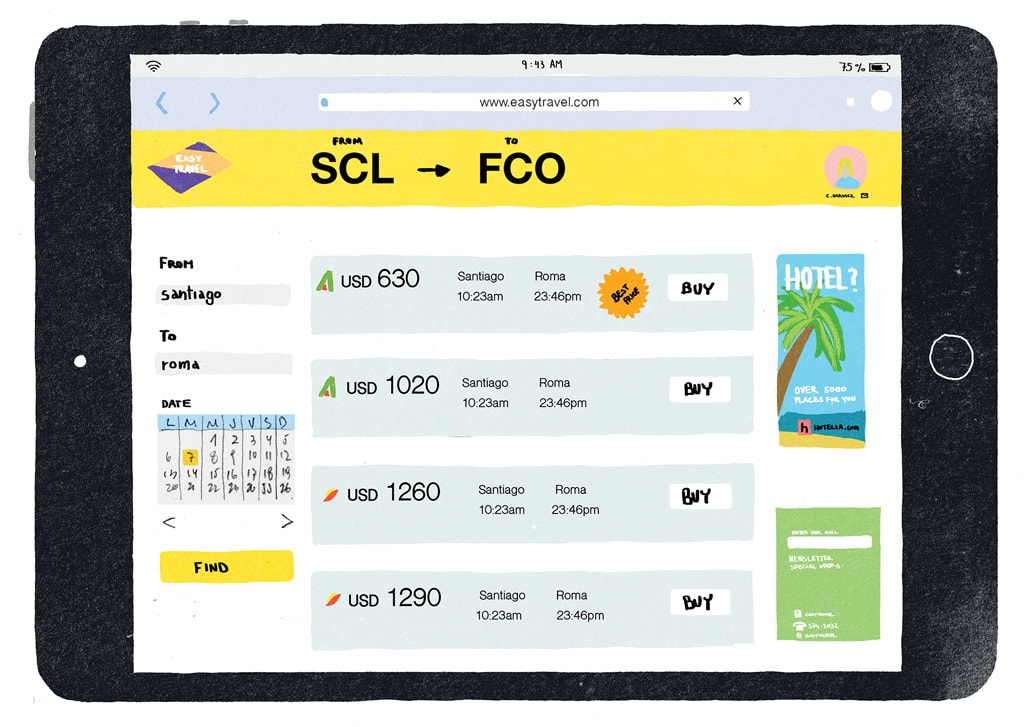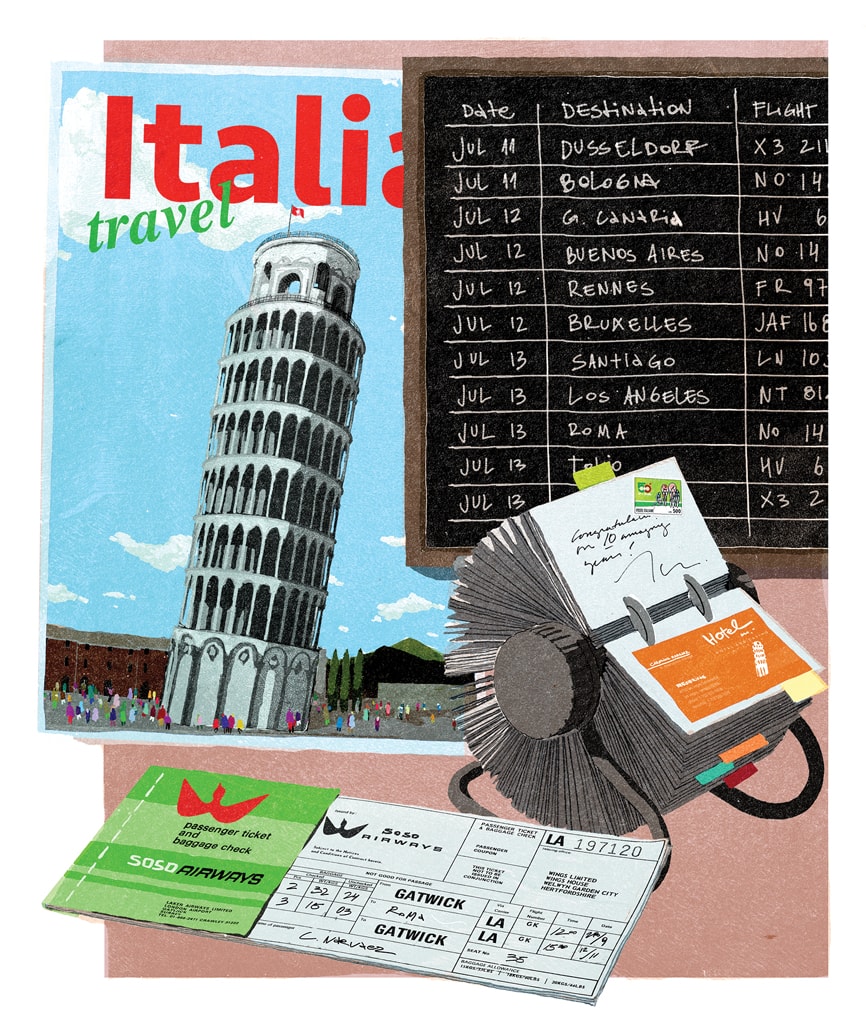New Distribution Capabilities to Streamline the Search for Airfares
Share

APEX Insight: In the ever-growing, multifaceted digital retail landscape, how can airlines ensure their full range of products and services is showcased across all platforms? Some say, New Distribution Capabilities (NDCs) promise to “level the playing field” by aggregating data between airlines and online travel agents, providing hopeful travelers with a single listing of all airfares, regardless of platform.
New Distribution Capabilities. No, it isn’t a drone-based package delivery system. And it isn’t a viewing infrastructure to binge watch your favorite programs on a smartphone. New Distribution Capabilities, or NDC, is a data protocol, a standard to permit the interchange of electronic information between airlines and travel agents, ultimately benefiting travelers.
“Airlines will be able to distribute the entirety of their product portfolio.” – Yanik Hoyles, IATA
Airlines have been upgrading and streamlining their websites and mobile apps to give customers a rich and enhanced user experience. Electronic boarding passes are de rigueur on smartphones, and now seat maps, document scanning and real-time baggage tracking are improving the passenger experience. Travelers receive an ongoing stream of e-mail offers from airlines and other travel providers before, during and after their trips.
But with all this technological and software wizardry, there’s been a growing disconnect between what airlines provide on their apps and websites and what’s available to both the brick-and-mortar travel agents and online travel services. Travel agents worldwide continue to play an integral role in trip planning, and want to have access to the rich content being created by the airlines to improve their client service offering.
 Streamlining Distribution
Streamlining Distribution
In development since 2012 by the International Air Transport Association (IATA), NDC has the potential to level the playing field. “Airlines will be able to distribute the entirety of their product portfolio, including ancillaries, in a consistent manner, across all channels, using rich format such as photos and videos,
with the ability to bring new product offerings to market much more quickly,” says Yanik Hoyles, IATA’s director, NDC program. “Consumers will benefit from a more transparent shopping experience, with access to all of an airline’s products and service offerings regardless of shopping channel. They will be able to compare the entirety of an airline’s offerings, not just the base fare.”
“The biggest benefit is that all parties in the travel supply chain will benefit from NDC, and that is a first in our industry for a very long time,” says Jim Davidson, CEO of Farelogix, an airline distribution technology provider. “Farelogix develops both the NDC Application Program Interface for airline connectivity and the merchandising and pricing engine, which is controlled by the airline. In other words, the airlines use these applications to create, price and deliver their content to third-party providers. We donated to IATA the original, or baseline schema, which is today the foundation of the NDC schema.”
“All parties in the travel supply chain will benefit from NDC.” – Jim Davidson, Farelogix
The industry has come a long way since travelers had to make bookings directly with the airline on the telephone. There may have been an airline ticket office in the biggest hotel of major cities, and travel agencies began springing up in towns in the 1930s. “In ‘ancient times,’ airlines were very interested in having travel agencies sell tickets because it was a distribution network for them,” explains Mike Premo, president and CEO of the Airlines Reporting Corporation (ARC). Operating since 1964 in the US, Air Traffic Conference of America (ARC’s predecessor) initially focused on ticket transaction settlement and, more recently, on providing the travel industry with technology solutions.
 “Airlines had everything from chalkboards to Rolodexes to lazy Susans, all sorts of efforts to try to manage inventory in a non-automated era,” Premo explains. Computers and data processing were a quantum improvement for the airlines, and gave rise to Global Distribution Systems like Sabre, Amadeus and Travelport. “The combination of commercial practices and technology all came together in the early 1980s. You could not be an economically viable travel agent and not have a computer in your office,” he says.
“Airlines had everything from chalkboards to Rolodexes to lazy Susans, all sorts of efforts to try to manage inventory in a non-automated era,” Premo explains. Computers and data processing were a quantum improvement for the airlines, and gave rise to Global Distribution Systems like Sabre, Amadeus and Travelport. “The combination of commercial practices and technology all came together in the early 1980s. You could not be an economically viable travel agent and not have a computer in your office,” he says.
Now, online travel companies like Expedia and Priceline give people another way to purchase services via the web. Travel metasearch sites, such as Hipmunk, Kayak and Skyscanner, add a new layer of aggregated travel information. But the overload of information can be overwhelming for the user.
“The consumer wants to be the traveler; they don’t want to be the travel agent.” – Henry Harteveldt, Atmosphere Research Group
Truer Airline Retailers
“The consumer wants a more straightforward and easier way to plan and book flights. They want to be the traveler; they don’t want to be the travel agent,” says Henry Harteveldt, travel industry analyst and adviser, and cofounder of the Atmosphere Research Group. “They want experiences that are richer in context. If I’m choosing a seat on a plane, a seat map is fine, but why not show me the view out the window. What travelers want is context and understanding. And NDC can bring that to the marketplace.”
 If a traveler shares information – such as his or her frequent flyer number – during an NDC-enabled travel search, an airline could provide an offer tailored to that individual. Recognizing the traveler’s status, the offer might include a lounge pass or perhaps a time-limited “book now!” meal voucher to entice bookings on off-peak flights.
If a traveler shares information – such as his or her frequent flyer number – during an NDC-enabled travel search, an airline could provide an offer tailored to that individual. Recognizing the traveler’s status, the offer might include a lounge pass or perhaps a time-limited “book now!” meal voucher to entice bookings on off-peak flights.
“What this really does is introduce, for the first time, the potential for airlines to be true retailers. Once NDC starts to be implemented on a wider basis, it will enable airlines to be much more creative in how they choose to go to market with their various products and offers,” says Harteveldt.
British Airways is one of the airlines that’s rolling out NDC-enabled processes. “The introduction of NDC is a critical chapter in the evolution of distribution for the travel industry,” says Ian Luck, the airline’s head of distribution. “There are more channels than ever for customers to buy through and more products for them to choose from … Customers have a choice of who they fly with and we want to make sure they can choose from our full range of products and they know as much as possible about what British Airways offers. NDC enables us to do that.”
IATA’s Hoyles recognizes that there’s work to be done to have greater adoption of NDC by the industry, but signs are pointing in the right direction. “As the benefits of adopting a single data transmission standard have become clearer, we have seen the major players climb on board,” he says. “Amadeus, Travelport and Sabre each have endorsed NDC, as have 15 other IT providers. To date, 13 airlines have deployed all or part of the range of NDC schemata, and 15 of the top 20 airline groups by revenue have either deployed components of the NDC standard or have plans to do so in the next two or three years.”
And as NDC gets integrated into the industry, ARC’s Premo reminds us where the focus needs to be. “We’re in the very early days of actually solving our customer problems in a way that’s going to create loyalty and customer satisfaction,” he says. “The good news is that now, with NDC, we have the tools to enable us to do that. You’ll never go wrong if you keep your eye on the customer.”
This story was originally published as “Delivering the Goods” in the June/July issue of APEX Experience magazine.


